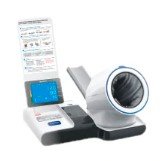Improving Maternal Health Outcomes: Proper Techniques for Blood Sample Collection from Pregnant Women
Summary
- Proper identification of pregnant women during sample collection is crucial for accurate results.
- Following standard operating procedures and guidelines for blood sample collection is important for maternal health outcomes.
- Implementing gentle and careful techniques when drawing blood from pregnant women can help minimize discomfort and reduce the risk of complications.
Introduction
When it comes to medical testing, accurate blood sample collection is essential for obtaining reliable results. This is especially true for pregnant women, as their health and the health of their unborn child can be at stake. Phlebotomists play a crucial role in ensuring that blood samples are collected properly and accurately from pregnant women to improve maternal health outcomes.
Importance of Proper Identification
One of the most important techniques that phlebotomists can implement to ensure accurate blood sample collection for pregnant women is proper identification. Ensuring that the patient is correctly identified before collecting a blood sample is crucial for preventing mix-ups and ensuring that the Test Results are attributed to the correct individual.
Techniques for Proper Identification
- Ask the patient to confirm their full name and date of birth before proceeding with the blood draw.
- Check the patient's identification band or ask for other forms of identification to confirm their identity.
- Verify the patient's identity with another healthcare professional or a witness, especially in cases where the patient is unable to confirm their identity.
Following Standard Operating Procedures
Phlebotomists should always follow standard operating procedures and guidelines for blood sample collection to ensure accuracy and reliability of the results. This is particularly important when collecting blood samples from pregnant women, as deviations from established protocols can lead to errors and potentially impact maternal health outcomes.
Standard Blood Collection Procedures
- Properly clean and disinfect the puncture site before drawing blood.
- Use appropriate needle size and technique for Venipuncture to minimize discomfort and reduce the risk of complications.
- Label blood collection tubes accurately and clearly to prevent mislabeling and confusion during testing.
Gentle and Careful Techniques
Implementing gentle and careful techniques when drawing blood from pregnant women can help minimize discomfort and reduce the risk of complications. Pregnant women may be more sensitive to pain and discomfort during blood collection, so it is important for phlebotomists to be mindful of their technique and approach when performing Venipuncture.
Techniques for Minimizing Discomfort
- Communicate with the patient and explain the blood collection process to help alleviate anxiety and fear.
- Select a suitable puncture site and use a gentle touch when inserting the needle to minimize pain and bruising.
- Apply pressure to the puncture site after the blood draw to prevent bleeding and hematoma formation.
Conclusion
Accurate blood sample collection is essential for providing reliable results and improving maternal health outcomes for pregnant women. Phlebotomists should implement specific techniques and protocols, such as proper identification, following standard operating procedures, and using gentle and careful techniques, to ensure accurate blood sample collection for pregnant women. By following these guidelines, phlebotomists can contribute to better health outcomes for both the mother and the baby.

Disclaimer: The content provided on this blog is for informational purposes only, reflecting the personal opinions and insights of the author(s) on the topics. The information provided should not be used for diagnosing or treating a health problem or disease, and those seeking personal medical advice should consult with a licensed physician. Always seek the advice of your doctor or other qualified health provider regarding a medical condition. Never disregard professional medical advice or delay in seeking it because of something you have read on this website. If you think you may have a medical emergency, call 911 or go to the nearest emergency room immediately. No physician-patient relationship is created by this web site or its use. No contributors to this web site make any representations, express or implied, with respect to the information provided herein or to its use. While we strive to share accurate and up-to-date information, we cannot guarantee the completeness, reliability, or accuracy of the content. The blog may also include links to external websites and resources for the convenience of our readers. Please note that linking to other sites does not imply endorsement of their content, practices, or services by us. Readers should use their discretion and judgment while exploring any external links and resources mentioned on this blog.
